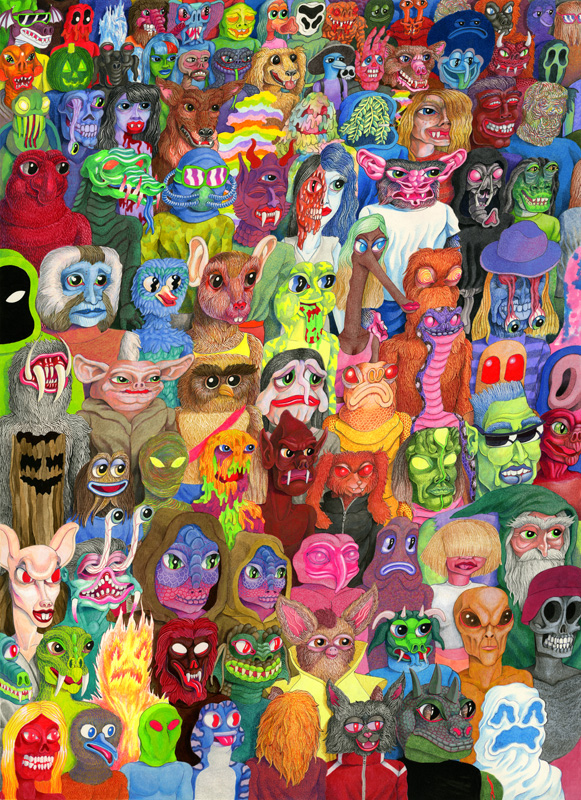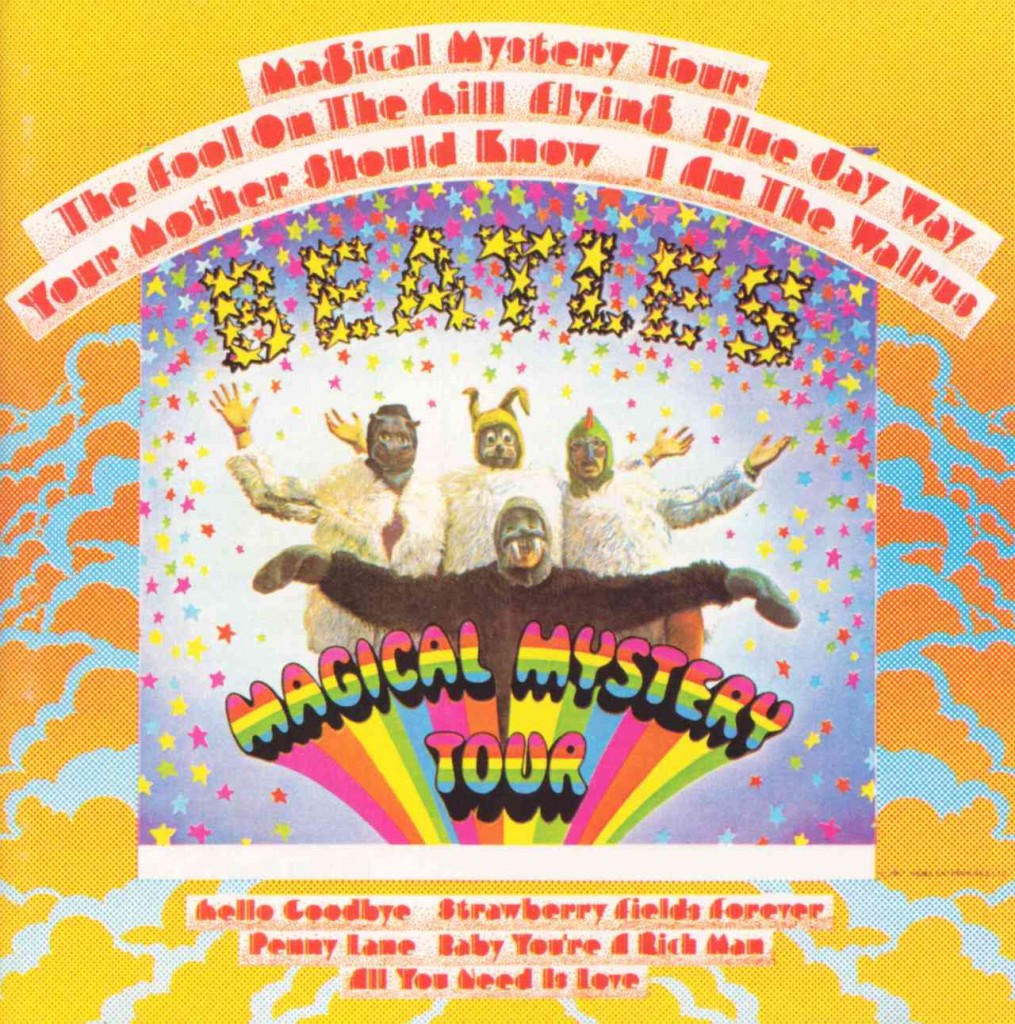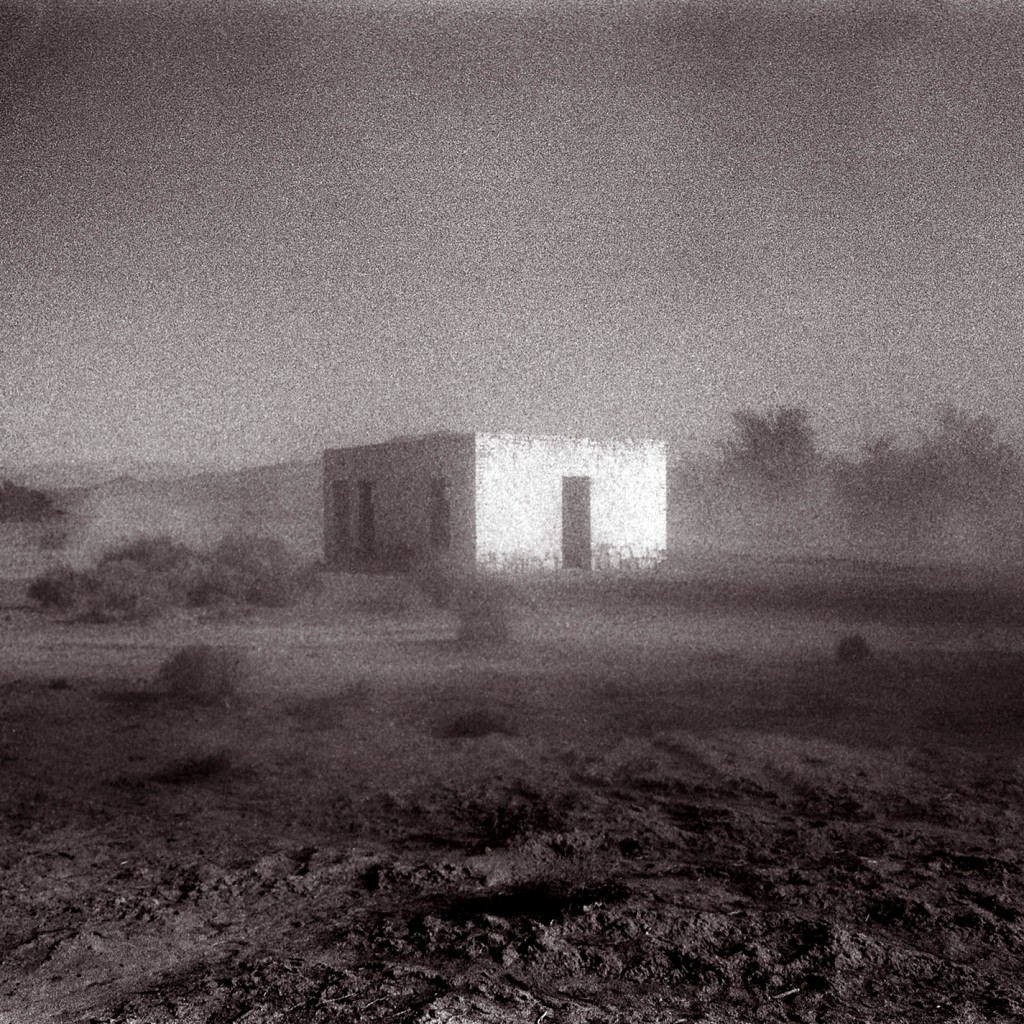Posts Tagged ‘music reviews’
‘Twin Peaks’: Your A to Z Guide
May 17, 2017MAJOR SPOILER ALERT
A: Angelo Badalamenti
“Where we’re from, the birds sing a pretty song and there’s always music in the air.” That music – as indispensable to to the series as Dale Cooper or donuts and coffee – is the work of Lynch’s longtime musical collaborator Angelo Badalamenti, whose suite of lush leitmotifs made the show sound like a world all its own. Twin Peaks without the composer’s sumptuous synths is like Psycho without Bernard Herrman’s screeching strings, or Jaws without John Williams’s menacing “dun-DUN-dun-DUNs.” This clip of the composer explaining how he and Lynch came up with “Laura Palmer’s Theme” shows how much heart and soul he poured into every note.B: Bob
Lynch was filming a scene for the pilot in which the late Laura Palmer’s mother sits bolt upright and screams. Then he noticed a face in the mirror behind her – the same face he himself saw when its owner, an actor turned set dresser named Frank Silva, crouched behind Laura’s bed to dodge the camera for a different shot. From this sinister coincidence was born Bob, the demonic rapist and murder from the otherworldly Black Lodge who began the series by killing Laura Palmer and ended it by possessing Agent Dale Cooper. Thanks to his malevolent presence, no show has ever been scarier.
Slowdive: Slowdive
May 8, 2017Nature metaphors come so readily to mind when listening to shoegaze—clouds, stars, skies, storms, oceans, whirlwinds, maelstroms—that it’s easy to believe that, like the weather it evokes, it just sort of happens. Invest in the right guitar pedals, put the right breathy spin on your vocals, and bam—instant Loveless, or close enough to fool a stoned and heartsick teenager. It’s as easy as walking out your front door and letting the spring air greet you.
For some bands that may well be all there is to it. But song by song, moment by moment, sometimes even note by note, Slowdive do it better. There’s nothing elaborate in the bassline for “Slomo,” the opening track of their first album in 22 years, given the thick bed of guitars it bounces on. Just seven notes, the sixth of which leaps unexpectedly up an octave instead of continuing the bassline’s descent. Or at the end of “Slomo,” when Rachel Goswell’s voice pulls off a similar trick, first when she takes over lead vocals from Neil Halstead, then when she starts singing them at the very top of her register. At the end of “Go Get It,” Halstead sings two different lyrics laid on top of one another simultaneously, like his conversation with Goswell is over and now he’s talking to himself.
In a genre beloved for its comfortable reliability, all it takes are these small but striking detours to remind us that this glorious noise is the work of human hands and the skill that move them. If there’s a story to Slowdive—the band’s return to active recording together after decades of slowly mounting critical and audience acclaim—beyond the human-interest angle of the return itself, the swerves in the songcraft tell it: This is an album as thoughtful as it is beautiful.
Goldfrapp: Silver Eye
March 30, 2017It takes Alison Goldfrapp more than a full verse into Silver Eye’s leadoff track “Anymore” before she utters a single word with more than one syllable: “You’re what I want. You’re what I need. Give me your love. Make me a freak.” Reductive? Considering her and collaborator Will Gregory—whose past lyrics would gussy up their earthy emotions and desires in hazy surrealism like, “Wolf lady sucks my brain” and, “Now take me dancing at the disco where you buy your Winnebago”—you might be tempted to think so. Prior to “Anymore,” Goldfrapp hid their most verbally explicit expression of lust (“Put your dirty angel face between my legs and knicker lace”) in an elaborate fantasy about a tryst with a traveling carny titled, appropriately enough, “Twist.”
But the direct approach suits this new album, the group’s first since 2013’s Tales of Us. Ever since the pair swapped the John Barry ambience of their debut album Felt Mountain for the electro-glam of its successor Black Cherry, they’ve staked their identity on being able to assume new identities at will. Wanna double down on that sexy “Spirit in the Sky” shimmer? There’s Supernature. Wanna go pastoral? Check out Seventh Tree. Wanna trade Gary Numan and Marc Bolan for the Pointer Sisters and circa-“Jump” Van Halen? Head for Head First. By contrast, Silver Eye is a synthesis—a combination of all the things the group has done well. “Become the one you know you are,” commands a key track, and they’re teaching by example. Who needs many syllables to express something so fundamental?
Nine Inch Nails: ‘The Fragile (2017 Definitive Edition)’ / ‘The Fragile: Deviations 1’
January 11, 2017The Fragile arrived a stylistic turning point, emerging at the point where the “alternative” sobriquet fell out of fashion and “indie” achieved dominance. Today, though, reservations about the lyrics’ outré confessionality and the music’s jam-packed, everything-plus-the-kitchen-sink gigantism seem positively quaint. (Don’t care for titanically hyper-produced albums stuffed with uncomfortably intimate and self-mythologizing lyrics about your emotional world falling apart? Tell it to Lemonade.) The Fragile may lack the tightness of Nine Inch Nails’ other highlights: the concise fury of Broken, the inexorable depressive logic of The Downward Spiral, the late-career professionalism of Hesitation Marks. But it takes the emotional distress that gives it its title and transmutes it into something colossal, defiant, and resilient. Listen to it at your strongest or your weakest (and I’ve certainly done both) and it will offer you a sonic signature commensurate with the power of what you feel inside.
tl;dr version:
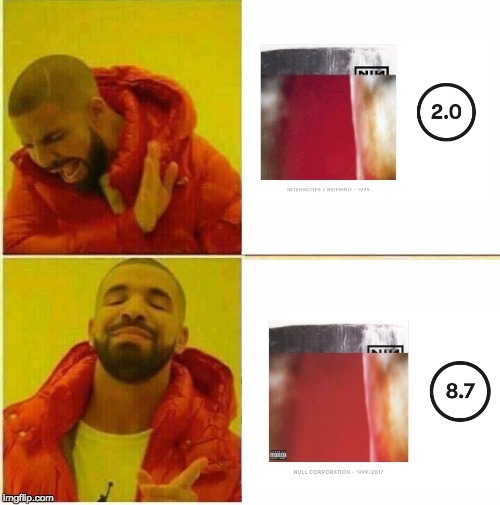
Steve Harley & Cockney Rebel – “Make Me Smile (Come Up and See Me)” [Rewind Festival, 17 August 2013]
December 31, 2016“Make Me Smile (Come Up and See Me)” is the hit in question—a deceptively buoyant poison-pen letter to the musicians who helped make Harley a star. Its verses highlight the star’s melodramatic self-pity (“you’ve broken every code and pulled the Rebel to the floor”), his dismissal of his ex-comrade’s motives as a tedious lust for filthy lucre (“for only metal—what a bore”), his insistence that they’re the ones who wronged him and not the other way around (“it’s from yourself you have to hide”), and his moral and aesthetic superiority (“you’ve taken everything from my belief in Mother Earth…I know what faith is and what it’s worth”).
But the chorus. The chorus! As if fulfilling the promise of the song’s upward-scaling opening guitar filigree and the till-then ironic “ba ba ba”s and “oooh la la la”s, Harley interrupts his exoriations of his former friends by saying “Come up and see me, make me smile / Or do what you want, running wild.” A reference to the Mae West quote he’d drop when his ex-bandmates would ring the buzzer of his upper-floor apartment for a visit, the titular lines run counter to all the other ones—a fantasy of rapprochement, forgiveness, friendship, a return to the carefree days gone by. It’s a fascinating dynamic for a pop song: a chorus that exists in diametric opposition to every verse. A chorus rendered impossible by every single other part of the song.
I wrote about a live performance of “Make Me Smile (Come Up and See Me)” by Steve Harley & Cockney Rebel for the music tumblr One Week One Band’s year-end special on songs of hope.
Shallow Rewards – The Song Remains the Shame: Mr. Robot and Stranger Things
September 26, 2016I was delighted to become (I think) the first ever recurring guest on Shallow Rewards, the enormously insightful podcast from music criticism’s adulte terrible Chris Ott, to discuss the use of standout pop songs on the soundtracks of prestige television shows. We focus on Mr. Robot and Stranger Things (so watch out for spoilers) but touch on Halt and Catch Fire, The Sopranos, and The Wonder Years, with plenty of digressions into film soundtracks and film in general (Cameron Crowe, Martin Scorsese, SLC Punk, Under the Skin) as well. Chris is one of my favorite critics of any kind and it’s a pleasure talking to him. I hope you enjoy the results!
Shallow Rewards: Not Yr 90s with Sean T. Collins
July 21, 2016I appeared on my favorite music podcast (and my favorite podcast period), Chris Ott’s Shallow Rewards, to discuss how the critical narrative of the 1990s has distorted the reality of how the era’s music, “alternative” and otherwise, functioned, flourished, and failed. There are substantial digressions about the overall state of arts criticism and journalism in there, too. Nobody does a better job than Chris of editing a podcast for maximum impact — honestly, it’s not even close. Moreover his work has been a huge inspiration and influence for me, and it was an honor to be a guest. Please listen!
The 10 Best Underworld Songs
March 18, 20169. “Always Loved a Film” (from Barking, 2010)
From “lager lager lager” to “crazy crazy crazy” to “you bring light in,” repetition has always figured prominently in singer Karl Hyde’s lyrics. But it’s never done so more revealingly than in “Always Loved A Film,” a standout track from their last studio album, 2010’s Barking. The words that get the most play here? “The rhythm” and “Heaven,” two concepts that for Underworld are largely synonymous. The track itself is one of the most conventional verse/chorus/verse affairs in their discography (they get reflexively tagged by critics for their traditional rock-songwriting style way more often than they actually write traditional rock songs), with guest producers Mark Knight and D. Ramirez adding a crunchy texture that befits the song’s structural solidity. Like “Two Months Off,” it’s a love song that uses the imagery of light radiating outward in a sleight-of-hand substitution for the intense emotion being directed inward. This time, though, the celestial metaphor is brought down from the sky to the earth by anchoring it to the memory of walking down a hot summer street: “The rhythm of keys swinging in your hand, the rhythm of light coming out of your fingers.” When the chorus hits, it’s a million miles from the elusive and inscrutable lyrics Hyde usually indulges in, hitting as hard and direct as anything on pop radio at the time — “Heeeeaven, heavennnnnnn — can you feel iiiiit?” could have been a Lady Gaga lyric. The highlight, though, may be the acoustic-guitar-accompanied bridge, which adds an element of uncertainty — “I don’t know if I love you more than the way you used to love me” — a la George Harrison’s “You’re asking me will our love grow / I don’t know, I don’t know” from “Something.” Both songs trust love to be big enough to accommodate doubt, bright enough to risk some shadow.
In honor of Underworld’s terrific new record Barbara Barbara, we face a shining future, I named The 10 Best Underworld Songs for my Stereogum debut.
Music Time: Underworld – Barbara Barbara, we face a shining future
March 15, 2016Let’s talk about love—with Underworld, you kind of have to. Though still best known for shouting “lager, lager, lager” in their epochal 1996 hit “Born Slippy.NUXX,” the long-running dance duo, consisting of singer-lyricist-multi-instrumentalist Karl Hyde and producer Rick Smith, have quietly but persistently placed matters of the heart at the center of their best songs. Their breakthrough single “Cowgirl” pledged “I wanna give you everything,” robotically chanting the final word like a mantra for emphasis. “Jumbo,” the buoyant highlight of 1999’s Beaucoup Fish, took a (literally) sweeter approach, with singer Karl Hyde purring “I need sugar” when “I get thoughts about you.” And despite the involvement of a series of guest producers whose work never quite gelled, UW’s last studio album Barking was held together by a chain of out-and-out love songs, from its singles “Scribble” to its tremulous closing ballad “Louisiana” (“When you touch me, planets in sweet collision”). Regardless of their reputation for turning late-night urban-hedonism anthems into festival-filling crowdpleasers, Underworld remain romantics at heart.
Nowhere is this more apparent than on Barbara Barbara, we face a shining future—perhaps because Smith and Hyde’s own creative romance needed rekindling.
They said you were hot stuff: on the “Baby’s On Fire” sequence from Velvet Goldmine
January 5, 2015I Was a Teenage Velvet Goldmine Skeptic. Not quite teenage, I suppose — I’d already turned 20 by the time of the film’s autumn 1998 release — but my musical mindset was still adolescent in essence. Precariously poised between poseurs and mainstream morons, I believed, there existed a sweet spot of authentically alternative art, of real rock and roll rebellion. This was a place you could live, provided you worked relentlessly to refine your taste to its essentials, and then never, ever fucking budged. One and a half post-poptimism decades later I’m sure I don’t need to tell you how needlessly dreary and exhausting an approach this is, but my own Pauline conversion was still a few years in the future. That road to pop-cultural Damascus had many side streets. But if you were to retrace the route — starting with My First Pop Divas Kylie and Beyoncé, working back through electroclash and the Grand Theft Auto: Vice City soundtracks, traversing all the ‘80s pop and ‘70s rock I’d never before gone near, and converging at David Bowie, the artist whose breathless, liberating adoption and deletion of influences and imagery at opened up my avenues to all of the above — the road would begin with a chance late-night Cinemax channel flip and my second encounter with Todd Haynes’s glam fantasia Velvet Goldmine. It’s no exaggeration to say that that viewing changed my life. The only thing it had in common with my first viewing of the film — a head-scratching, yawn-suppressing affair in the campus art-house during its brief bomb of a theatrical run, at which I pronounced it an overinflated, pointlessly complex dud that committed the cardinal sin of not rocking hard enough — was this: I loved the “Baby’s On Fire” sequence, the movie’s centerpiece, its beating heart, its throbbing loins.
Famously, Velvet Goldmine is to David Bowie what Citizen Kane (from which it stole its structure) is to William Randolph Hearst. To use a more recent example, and a more accurate one given how both films center a fictional, emotionally overwhelming relationship between two men, it is to Bowie what The Master is to L. Ron Hubbard. In place of Joaquin Phoenix’s giggling alcoholic damage case, VG puts forward Ewan MacGregor’s American rock’n’roll animal Curt Wild as the foil to its central celebrity stand-in, Jonathan Rhys Meyers’s Brian Slade. Though primarily an Iggy Pop manqué, Wild will, throughout the course of the movie, incorporate elements of Lou Reed’s biography, Oscar Wilde’s name, Kurt Cobain’s name andlooks, and Bowie’s own post-glam Berlin period. The moniker for Meyers’s Bowie figure similarly references fellow glitter luminaries Brian Eno, Bryan Ferry, and the band Slade; if we were to pick apart “Maxwell Demon and the Venus in Furs,” Brian’s alien-messiah persona and his house band, we’d be here all night.
This Russian nesting-doll layering of references to icons of rock, film, and literature is an annotator’s dream, to be sure. But more importantly, it enables Haynes to make a movie not about Bowie, Iggy, and glam, but about the idea of them, doing so by constructing them from a continuum of related ideas. Velvet Goldmine is about artifice as art and fandom as fantasy, and a love letter to the artists who introduced a young Haynes to these sensations as he came to terms with life as a young gay man. The “Baby’s On Fire” sequence is where that letter gets sealed with a kiss.
I wrote about my favorite sequence from one of my favorite movies, the Velvet Goldmine montage sequence scored by Jonathan Rhys Meyers/Venus in Furs cover of Brian Eno’s “Baby’s on Fire,” for One Week One Band’s special soundtrack spectacular.
No Elvis Beatles or the Rolling Stones in 1977
December 9, 2013Music Time: Nine Inch Nails, Barclays Center, October 14 2013
October 15, 2013Nine Inch Nails’ 20th-century iteration was a matter of excess. It was excess of abandon during the Broken and Downward Spiral period — smashed instruments, trashed dressing rooms, primal screams on the records. And it was excess of ambition during that era’s summary statement, The Fragile — live-in recording studios, Bob Ezrin on the boards, a level of sonic perfectionism that literally drove Trent Reznor to drink.
Since the band’s post-sobriety return with 2005’s With Teeth, however, Nine Inch Nails has been about keeping control. With Teeth pared the act down to a tight, pummeling rock-band model, one that remains a centerpiece of its live shows. Year Zero belied its concept-album dystopia with a quick-and-dirty recording process — a couple of laptops on a tour bus, pretty much. Ghosts may have been an instrumental triple album, but each track was more of a sketch than a song. The Slip blended several of these modes.
The pattern culminated in Hesitation Marks. It’s a throwback to The Downward Spiral and The Fragile in terms of its visual and sonic vibe, but lyrically it’s a contemplation and rejection of the Reznor of that period. It’s about an emotional life he now has control over, and his fear of losing his grip the way he once did. All told, the career trajectory that emerges from juxtaposing these eras evinces a great deal of thought about what this band does and what it means to its architect.
Nine Inch Nails’ live show reflects that care and attention. It starts in full muscular rock-band mode, with stark white lighting that’s equally no-nonsense. When the set expands to encompass more expansive material from Hesitation Marks and The Fragile, a pair of backup singers are added — their first vocals got a big audience pop, since that’s pretty much the last thing anyone expects at a Nine Inch Nails show, but for the most part they serve to unobtrusively shore up and support Reznor’s vocals, which often play off subtle but crucial harmonies or calls-and-responses in the songs’ studio version that have traditionally been lost in live translation.
A digital light show of genuinely stunning sophistication and ambition fleshes out the visuals accordingly, rivaling if not surpassing your widescreen rock band of choice for sheer spectacle. But again, the range of effects is carefully considered, primarily involving shifting digital colors, three-dimensional wire frames, and silhouettes. It’s evocative but non-narrative, designed to command audience attention during lesser-known or more difficult songs.
The lighting cues often get very specific, highlighting individual musicians in frequently unorthodox ways: I think pretty much every trick in the book was used to spotlight drummer Ilan Rubin except an actual spotlight, while one memorable solo from guitarist Robin Finck was reverse-spotlighted, a digital projection sort of burning away to blackness as he played. Bassist Pino Palladino, who takes his on-stage comportment cues from the similarly stoic John Entwistle (whom he’s replaced in the Who), is barely ever lit at all.
And for all its high technology, a couple of its strongest moments were callbacks to the band’s rich design history: a Batsignal-like projection of the classic NIN logo ended the main set during the final notes of “Head Like a Hole,” while the encore’s closing performance of “Hurt” was accompanied by the same black-and-white montage of disturbing images that ran when the band played the song during the Downward Spiral’s arena tour nineteen years ago. It’s a clever way to emphasize the time period during which his relationship with the largest segment of his audience was forged, while connecting it visually to his more recent and forward-thinking work — a capstone for a thoughtful, frequently spectacular show that incorporates the person he was then into the artist he is now.
Why Boards of Canada are the Game of Thrones of Electronic Music
June 11, 2013Two great tastes that taste great together: Over at BuzzFeed Music, I wrote about the ways in which the music and career of the great Scottish eletronic-music duo Boards of Canada, whose excellent first album in eight years Tomorrow’s Harvest came out this week, mirrors the A Song of Ice and Fire/Game of Thrones phenomenon.
Pulses
May 15, 2013“No way to control it”
April 19, 2013Music Time: David Bowie – The Next Day
March 12, 2013David Bowie’s been looking back at himself in his music for at least 16 years, but this is the first time he’s doing it as an artist who’s actually, legitimately, honest-to-god old. At a dashing-looking 66, he’s hardly ready for the record books as World’s Most Decrepit Rocker, but in the past you’d get the impression that to Bowie, being “old” simply meant wrestling with the reality of no longer being the sexual provocateur he was in the early ’70s, the art-rock innovator he was in the late ’70s, or the world-bestriding megastar he became in the early ’80s with Let’s Dance. Now, on his new album, The Next Day, it sounds like “old” means “Jesus, I could have died on an operating table.”
Music Time: Depeche Mode – “Higher Love”
January 15, 2013I wrote about “Higher Love” by Depeche Mode for Cool Practice. A band playing to its strengths and obsessions, hard.
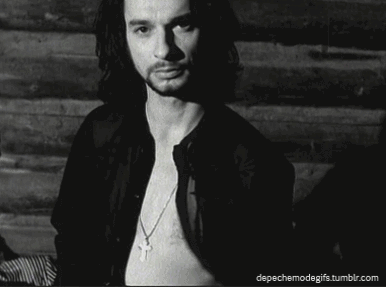
The Feel-Bad Album of the Year
December 19, 2012I’m depressed. I’ve also been obsessively listening to Godspeed You! Black Emperor’s album ‘Allelujah! Don’t Bend! Ascend! These two phenomena are not unrelated. I wrote a piece for BuzzFeed Music explaining why.
My friend and editor Matthew Perpetua put it this way in the hed/dek he crafted for it:
How 2012’s Most Miserable Album Helped Me Through Depression
Godspeed You! Black Emperor’s Allelujah! Don’t Bend! Ascend! was the only record that made sense to me when it felt like my world was falling apart.
It’s something I was building toward writing for months and I hope you like it.

